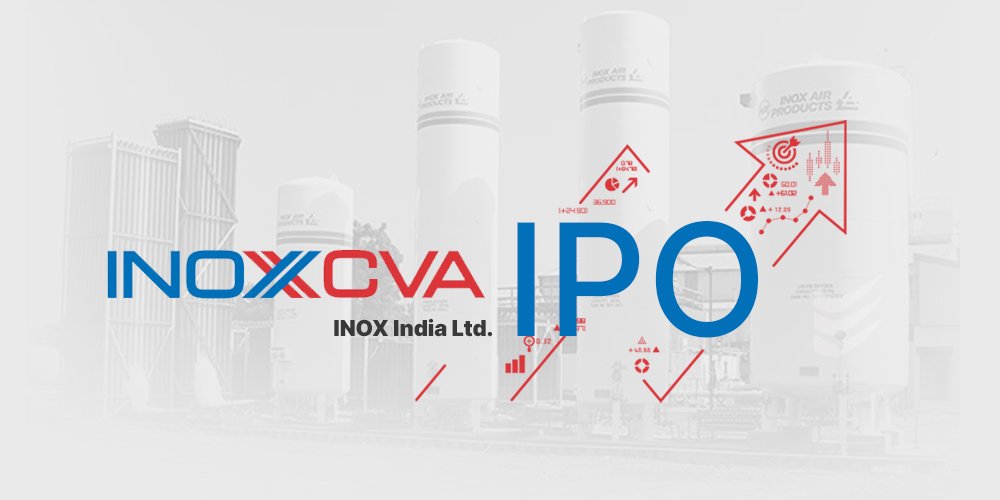The much-awaited Inox India IPO allotment has been finalized, and investors can now check their allotment status online. The listing date for the shares is on [date], and the grey market premium is currently at Rs 627-660 per share.

In this blog post, we will walk you through the process of checking your Inox India IPO allotment status and what to do next if you have been allotted shares.
How to Check Your Inox India IPO Allotment Status
- Go to the website of the registrar of the issue, [link to registrar website].
- Select the “Inox India IPO” from the list of IPOs.
- Enter your PAN number and application number.
- Click on the “Submit” button.
Your allotment status will be displayed on the screen. If you have been allotted shares, you will see the number of shares you have been allotted and the price you paid for them.
What to Do Next if You Have Been Allotted Shares
If you have been allotted shares in the Inox India IPO, you will need to pay the subscription amount. You can pay the subscription amount online or through your bank.
Once you have paid the subscription amount, your shares will be credited to your demat account on [date]. You can then sell your shares on the stock exchange after the listing date.
Grey Market Premium
The grey market premium of Inox India shares is currently as of 20-12-2023 at ₹530 per share. This means that investors are willing to pay ₹530 per share for the shares in the grey market. The grey market is an unofficial market where shares are traded before they are listed on the stock exchange.
Largest cinema company in India:
As of today, December 19, 2023, the current picture for the largest and second-largest cinema companies in India is a bit interesting:
Largest:
- PVR INOX Ltd. holds the title of the largest cinema company in India. This is a result of the February 2023 merger between PVR Cinemas and INOX Leisure, creating a combined entity with the most extensive network of screens across the country. Currently, based on screen count and revenue, PVR Limited is considered the largest cinema company in India. They operate over 870 screens across India and offer a wider variety of formats compared to other rivals.
Second Largest:
Determining the second largest player becomes slightly nuanced due to different ways of measuring size. Here are two contenders:
- Cinepolis India: If we consider the number of screens, Cinepolis India comes in a close second with over 350 screens across the country.
- INOX Leisure (Pre-Merger): While technically no longer a separate entity, it’s worth noting that before the merger, INOX Leisure held the second-largest position with around 675 screens.
Therefore, depending on the specific metric used, both Cinepolis India and the pre-merger INOX Leisure could be considered the second largest.
2. Guaranteed Inox India IPO allotment:
Unfortunately, there is no guaranteed way to get an IPO allotment. Allocation depends on multiple factors like demand, investor type, and bid price. However, you can increase your chances by:
- Applying early when the subscription window opens.
- Bidding at or slightly above the cut-off price.
- Applying through retail categories as they get a higher proportion of shares compared to institutional investors.
3. Selling IPO shares on the listing day:
Yes, you can sell your IPO shares on the listing day after the market opens. However, this might not be the best strategy due to potential volatility and price fluctuations. If the shares are heavily subscribed and open strong, you might miss out on potential gains by selling immediately.
4. Size of Inox IPO:
Inox Leisure Ltd. had its IPO in 2013. The issue size was:
- Offer size: 52.5 million shares
- Market cap at listing: Rs. 3,292 crores (approximately $426 million at that time)
5. Calculation of IPO issue size:
The issue size of an IPO is determined by several factors, including:
- Company valuation: Investment bankers estimate the company’s value based on future earnings, industry, and comparable companies.
- Capital needs: The company decides how much capital it needs to raise through the IPO for expansion, debt repayment, or other purposes.
- Market conditions: The overall market sentiment and demand for similar IPOs influence the size of the offering.
- Regulatory requirements: Minimum issue size limits may exist depending on the type of offering.
Ultimately, the issue size is a balance between raising sufficient capital and maintaining control for the existing shareholders. It’s not a simple calculation but involves careful consideration of various factors.
Conclusion on Inox India IPO
The Inox India IPO has been a huge success, and investors are eagerly waiting for the listing of the shares on the stock exchange. If you have been allotted shares in the IPO, congratulations! You have the opportunity to make a good profit if you sell your shares at the right time.
Disclaimer: This blog post is for informational purposes only and should not be considered as investment advice. Please consult with a financial advisor before making any investment decisions.